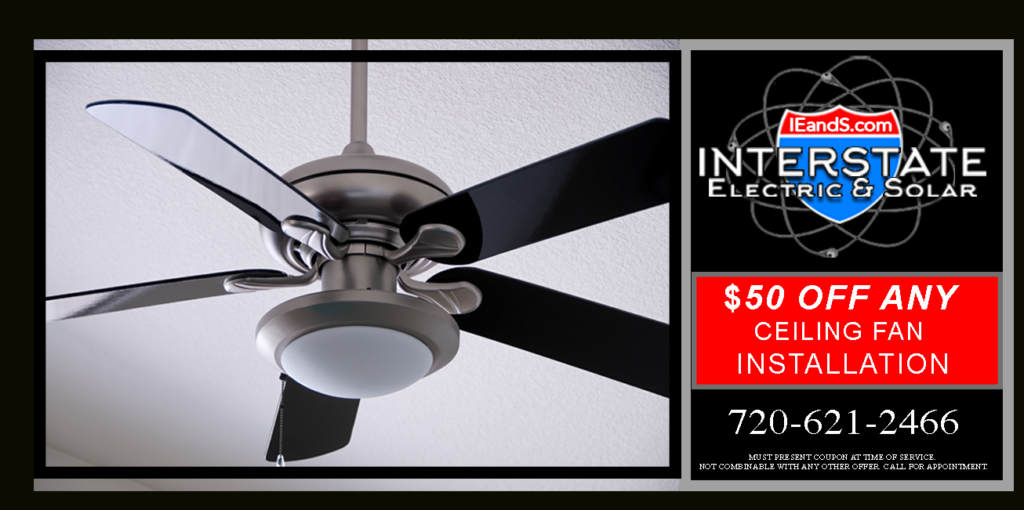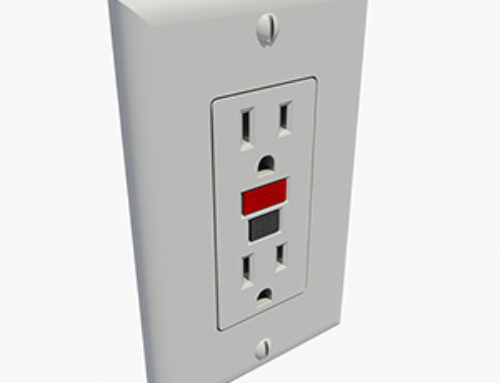
Selecting and Installing the Right Ceiling Fan
Installing a ceiling fan?
Installation Requirements:
• Install a ceiling fan in the center of the room at least 7 feet above the floor, 8 to 9 feet for optimal airflow.
• Blade tips should be no closer than 24 inches from the wall and from drapes.
• If you’re replacing a light with a fan, be certain that the electric box in the ceiling can support the weight of the fan.
Right Airflow and Blades
If you’re planning on installing a new ceiling fan here are some key facts that you might want to keep in mind. Unlike your air conditioners, ceiling fans will not lower a room’s temperature or help remove humidity from the air. However, you can save energy and hard earned money two ways. First, installing ceiling fans in specific locations and turning off your air conditioning. Second, turning up the thermostat a few degrees and letting the ceiling fan do the rest.
The recommended temperature for summer is 78° F indoors, but most people will turn the thermostat back to much cooler. According to Energy Star, you can save 3 to 5 percent on air conditioning costs for each degree you raise the thermostat. Using a ceiling fan, which will only cost a little to run, can make you feel up to 4° F cooler. Also, the ceiling fan is not designed to cool a room, so turn it off when you leave to save even more.
Airflow and blade shape matter. Look at cubic feet per minute (cfm) numbers on the box to get an idea of how well the ceiling fan moves air. A higher number means more air movement; on the other hand, don’t fret over small differences. Our tests showed comparable airspeed from fans rated from 5,000 to 5,600 cfm. Fans with the most airflow made the most noise, but it was wind noise and fluttering, not motor noise. Be wary of fans with large blades that have ridges, bumps, or other surface texture; those often make more noise on high than fans with smooth blades.
If the fan wobbles it can be fixed. Most fans come with balancing kits, a combination of weights that you attach to the blades to make up for slight differences in blade weight, and removable clips that help you determine where to place the weights. You can eliminate most of the wobbling with the kits, but it’s a trial-and-error process. If you need help selecting the right ceiling fan please give us at 720-621-2466.
Select the Right Ceiling Fan for the Location
Look for the Energy Star
Fans that earn the Energy Star label move air 20 percent more efficiently than standard models. Energy Star fans with light kits are 60 percent more efficient than conventional fan/light units and can save you more than $15 per year on utility bills. Select the right size. While 52-inch fans are the most popular, that size, give or take a couple of inches, works best in rooms that are 225 to 400 square feet. Choose a 42- to 44-inch model for 144 to 225 square feet. Opt for a larger fan if your room size is on the borderline, and run it on a slower speed, which is quieter.
Suit your style. From basic to ornate, ceiling fans can bring back memories of “Casablanca” or have a Jetsons-like modern twist. Motor-cover finishes include brass, bronze, and pewter. Basic fan blades have a paddle shape, while variations include oval and leaf shapes or wicker-like textures. Finishes include cherry, oak, maple, and painted blades.
Installation Requirements
- Install a ceiling fan in the center of the room at least 7 feet above the floor, 8 to 9 feet for optimal airflow.
- Blade tips should be no closer than 24 inches from the wall and from drapes.
- Check manufacturer’s directions for specifics.
- If you’re replacing a light with a fan, be certain that the electric box in the ceiling can support the weight of the fan.
- If you’re planning on placing a ceiling fan in a bathroom or outdoors, you need to find one that meets UL’s wet/damp rating. If the fan is indoors in a moist room, look for a UL “damp” rating. If the fan will be placed outdoors on a porch, look for one with a UL “wet” rating. Energy Star says that fans with these ratings have such features as sealed moisture-resistant motors, rust-resistant housing, stainless steel hardware, and all-weather blades.
Not sure? One of our licensed master electrician’s will be happy to help you,
call 720-621-2466.
Ceiling Fan Light Kits and Accessories
Ceiling fan light kits and accessories can be purchased three different ways: integrated into the fan, included with the fan at the time of purchase, or sold separately. Many of the light kits that are sold separately are “universal,” meaning they can be used on a number of different fan models. Similarly, most ceiling fans are light kit adaptable. However, there are many cases where compatibility is only between light kits and ceiling fans under the same brand.
If your fan doesn’t include lighting, be sure to purchase an Energy Star certified light kit. This lighting is efficient and long lasting, so you won’t have to make frequent bulb changes. There are three common types of light kits. Branched or stemmed light kits have cans or globes that can point up or down. Last, Uplight Kits sit on top of the housing and point toward the ceiling, casting a softer light.
Nearly all Energy Star qualified ceiling fan light fixtures use bowl lighting, which can be attached either directly to the ceiling fan housing or below the fan. Bowl and shade designs range from clear to alabaster, crystal, or tiffany. The fancier the glass design, the more expensive.
Lightbulbs
Not all CFLs and LEDs are intended for use in ceiling fans. If yours has bowl lighting, look for a lightbulb that can be used in an enclosed fixture. If your fan has cans or globes in which the bulb points down, you’ll need lightbulbs specifically intended for use in ceiling fans. Keep in mind that lighting affects energy use. LEDs are more efficient than CFLs and CFLs are more efficient than halogen lightbulbs. Incandescent are the least efficient of all and are being phased out. Ceiling fans come in a variety of styles and finishes. Some ceiling fans come with built-in remote controls and relays that allow you to make your Old wall switch all but obsolete. On some higher end model fans there is even Bluetooth connections that allow you to control your ceiling fans speed and light level with your smart device. We found that spending more didn’t guarantee better performance but had fancier finishes on the motor cover, blades, and accessories.
If you would like help selecting the right fan please give us a call 720-621-2466 or book an appointment at ieands.com. One of our licensed master electrician’s will be happy to help you.
We proudly serve Arvada, Aurora, Castle Rock, Commerce City, Conifer, Denver, Elizabeth, Englewood, Franktown, Golden, Henderson, Indian Hills, Littleton, Lone Tree, Morrison, Parker, Watkins, Westminster, Wheat Ridge and all other local areas.


